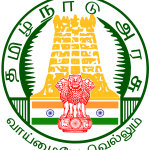
The Collegium System has its genesis in a series of judgments called “Judges Case”. The Collegium came into being through interpretations of pertinent constitutional provisions by the Supreme Court in the three judges cases.
The Collegium of judges is the Supreme Court’s invention. It does not figure in the Constitution, which says judges of the Supreme Court and High Courts are appointed by the President and speaks of a process of consultation. In effect, it is a system under which judges are appointed by an institution comprising judges. After some judges were superseded in the appointment of the Chief Justice of India in the 1970s, and attempts made subsequently to effect a mass transfer of High Court judges across the country, there was a perception that the independence of the judiciary was under threat. This resulted in a series of cases over the years. The ‘First Judges Case’ (1981) ruled that the “consultation” with the CJI in the matter of appointments must be full and effective. However, it rejected the idea that the CJI’s opinion, albeit carrying great weight, should have primacy.
The Second Judges Case (1993) introduced the Collegium system, holding that “consultation” really meant “concurrence”. It added that it was not the CJI’s individual opinion, but an institutional opinion formed in consultation with the two senior-most judges in the Supreme Court. On a Presidential Reference for its opinion, the Supreme Court, in the Third Judges Case (1998) expanded the Collegium to a five-member body, comprising the CJI and four of his senior-most colleagues.
The 99th Constitutional Amendment Act of 2014 and the National Judicial Appointments Commission Act of 2014 have replaced the collegium system of appointing judges to the Supreme Court and High Courts with a new body called the National Judicial Appointments Commission (NJAC). However, in 2015, the Supreme Court has declared both the 99th Constitutional Amendment as well as the NJAC Act as unconstitutional and void. Consequently, the earlier collegium system became operative again. This verdict was delivered by the supreme Court in the Fourth Judges case (2015). The court opined that the new system (i.e., NJAC) would affect the independence of the judiciary.
Procedure followed by the Collegium
The President of India appoints the CJI and the other SC judges. As far as the CJI is concerned, the outgoing CJI recommends his successor. In practice, it has been strictly by seniority ever since the super session controversy of the 1970s. The Union Law Minister forwards the recommendation to the Prime Minister who, in turn, advises the President. For other judges of the top court, the proposal is initiated by the CJI. The CJI consults the rest of the Collegium members, as well as the senior-most judge of the court hailing from the High Court to which the recommended person belongs. The consultees must record their opinions in writing and it should form part of the file. The Collegium sends the recommendation to the Law Minister, who forwards it to the Prime Minister to advise the President.
High Court judges are recommended by a Collegium comprising the CJI and two senior-most judges. The proposal, however, is initiated by the Chief Justice of the High Court concerned in consultation with two senior-most colleagues. The recommendation is sent to the Chief Minister, who advises the Governor to send the proposal to the Union Law Minister.
The Collegium also recommends the transfer of Chief Justices and other judges. Article 222 of the constitution provides for the transfer of a judge from one High Court to another.
All transfers must be made in the public interest, that is, “for the betterment of the administration of justice”.
Recent controversy
The recent controversy over the transfer of the Chief Justice of the Madras High Court, Justice Vijay Kamlesh Tahilramani, to the Meghalaya High Court has once again brought to the fore a long-standing debate on the functioning of the ‘Collegium’ of judges that makes appointments and transfers in the higher judiciary. Justice Tahilramani has submitted her resignation after her request for reconsideration of the transfer was rejected by the Collegium headed by the Chief Justice of India (CJI), Ranjan Gogoi, and four senior-most judges of the Supreme Court. While sections of the Bar have questioned the transfer as well as the lack of transparency about the exact reason, the Supreme Court (SC) has issued an official statement that the Collegium indeed had cogent reasons and that these could be revealed, if necessary.





